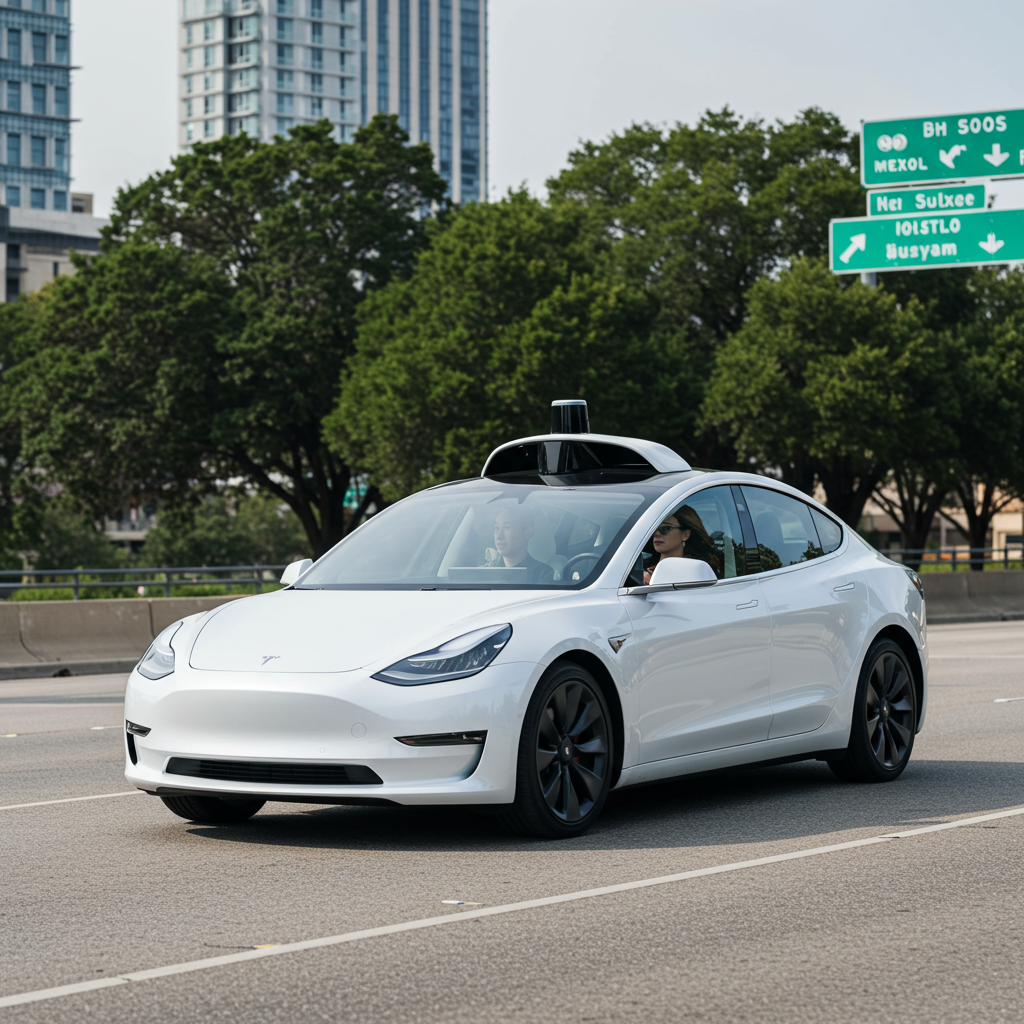Tesla’s Robotaxi Era Begins: Stock Jumps on Austin Trial Launch
Tesla’s long-awaited vision of a driverless taxi service took a significant step forward this week, with the company launching its first test rides for paying passengers in Austin, Texas. This milestone immediately resonated with investors, sending Tesla (TSLA) shares soaring more than 9% on Monday, adding nearly $100 billion to the automaker’s market value.
The debut of the Tesla robotaxi service represents a critical moment for CEO Elon Musk, who has consistently highlighted autonomous ride-hailing as fundamental to Tesla’s future valuation and strategic direction.
Inside the Austin Robotaxi Trial
Beginning Sunday, a limited fleet of self-driving Tesla vehicles commenced operations in a specific zone within Austin. These trials mark the first time Tesla’s autonomous technology is transporting customers who pay a flat fare of $4.20 per ride, albeit with human “safety monitors” present in the front seat.
This controlled pilot program is seen as crucial for Tesla. It signals a potential pivot away from mass-market electric vehicle (EV) dominance – a space increasingly challenged by global competition, particularly from China, and slowing demand for Tesla’s current lineup.
Navigating Safety and Regulation
Despite the enthusiastic market reaction, the path to widespread autonomous vehicle (AV) deployment is complex. Tesla recently informed U.S. regulators (NHTSA) that details regarding the safety of its robotaxi deployment, especially concerning performance in challenging conditions like poor weather, are confidential business information. This follows NHTSA inquiries into various safety aspects.
Furthermore, Tesla must navigate evolving state regulations. A new Texas law effective September 1 will require a state permit for self-driving vehicles, reflecting bipartisan calls for a cautious and responsible rollout of this technology.
Early Impressions: Positive Feedback Emerges
Initial feedback from early riders, including analysts and social media influencers, has been largely positive. Wedbush Securities analyst Dan Ives, a long-time Tesla bull, described his experience as “comfortable, safe, and personalized.” He highlighted the robotaxi’s capability to skillfully handle challenging urban scenarios, such as navigating narrow streets with parked cars and oncoming traffic while drivers opened doors.
Videos shared online also show the autonomous Teslas capably maneuvering through busy city streets, demonstrating patience and awareness around other vehicles.
Industry Hurdles and Skepticism Remain
While the Austin trial is a promising start, industry experts emphasize that it is just the beginning of a potentially years-long process to scale the service. The tightly controlled nature of the trial, limited fleet size, and reliance on safety monitors underscore the nascent stage of the public rollout.
Skepticism persists regarding Tesla’s autonomous driving technology, which primarily relies on cameras and artificial intelligence, without the redundancy provided by sensors like lidar and radar used by rivals such as Google-backed Waymo. Critics argue that reliance solely on cameras can be compromised by conditions like fog, heavy rain, or glare. Both Tesla and competitors have also faced federal investigations and recalls related to past collisions involving their AV technology.
Market Reaction and Future Outlook
Monday’s significant stock surge underscores the market’s excitement surrounding Tesla’s tangible progress in the robotaxi space – a key narrative driving the company’s premium valuation. Despite the jump, Tesla’s stock is still down approximately 12% year-to-date, impacted by factors including demand concerns and controversies linked to Musk’s political stances.
Nonetheless, TSLA continues to trade at a high valuation (nearly 149 times forward earnings estimates) compared to traditional auto manufacturers like Ford (9.3 times) and even tech giants such as Microsoft (31.6 times), reflecting the market’s continued belief in Tesla’s potential in future technologies like autonomous mobility.
The Austin robotaxi trial is a pivotal moment, demonstrating functional progress toward Tesla’s ambitious self-driving goals, even as significant technical, regulatory, and competitive challenges lie ahead.



